Explore the diverse cultural and spiritual dimensions of North India by visiting these temples. Immerse yourself in the vibrant heritage and spirituality of India through these remarkable North Indian temples.
India is a land of diverse cultures, with each state showcasing unique traditions, languages, beliefs, and cuisines. This diversity is reflected in its culture, traditions, festivals, and especially temple architecture. Temples, steeped in ancient history and faith, are integral to Indian society. As you embark on a spiritual journey through North India's temples, you'll notice their distinct Nagara or Indo-Aryan style, contrasting with the Dravidian style found in the south.
Each temple varies based on its dedicated deity, and while architecture, rituals, and location enhance the experience, all Indian temples offer inner peace and spiritual solace. Here are some North Indian temples to explore.
Vaishno Devi, Jammu & Kashmir
Nestled in the Trikuta Hills at an altitude of 1,585 metres (5,200 ft) in Jammu, the Mata Vaishno Devi cave shrine is one of Hinduism's holiest pilgrimage sites. According to legend, Vaishnavi Devi spent her time here in spiritual practices and penance, merging her human form with her creators' astral forms within the sacred cave. The temple attracts both devotees and trekkers, requiring a 12-kilometre trek from the base at Katra. Inside the cave, pilgrims worship three rock formations known as Pindis, and notably, there are no statues or idols in the sanctum sanctorum. The temple remains open throughout the year.
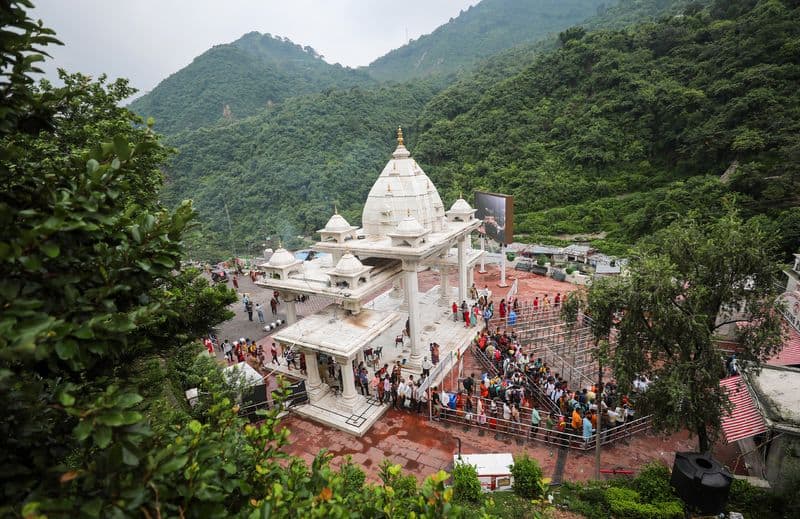
Best time to visit Vaishno Devi: March to November
How to reach?
- By Air: Jammu Airport is approximately 50 kilometres from Katra.
- By Train: Udhampur Railway Station is approximately 41 km from Katra.
- By Road: Jammu is approximately 586 km from Delhi.
Banke Bihari Temple, Uttar Pradesh
If you haven't experienced 'Braj Holi,' you've missed a unique celebration of colours in Vrindavan, known as Braj Dham, which includes Mathura, Nandgaon, Barsana, and Gokul. The Banke Bihari Temple is the epicentre of this vibrant festival, attracting hundreds of visitors during Holi. Established in 1860 by Swami Haridas, a devoted follower of Lord Krishna, the temple showcases Rajasthani architecture and features a statue of Krishna in the Tribhanga posture. Legend has it that Krishna and Radha appeared before Swami Haridas in Nidhivan, inspiring the creation of the Banke Bihari idol.
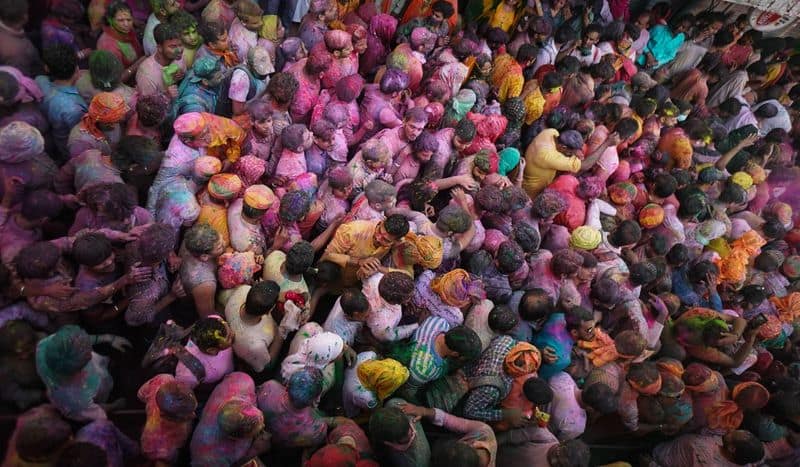
Best time to visit Banke Bihari Temple, Uttar Pradesh: September to March
How to reach?
- By Air: Kheria Airport in Agra is the nearest to Vrindavan, approximately 53 kilometres away.
- By Train: Mathura is the nearest railway, approximately 9 kilometers away.
- By Road: Vrindavan is 396 km from Lucknow.
Mahabodhi Temple Complex, Bihar
A UNESCO World Heritage Site since the Gupta period, the Mahabodhi Temple Complex in Bodh Gaya is one of the oldest brick temples, marking the site where Buddha attained enlightenment. Founded by Emperor Ashoka in the 3rd century and completed in the 4th and 5th centuries, it features a unique symmetrical design. The temple stands at 51.81 metres (170 ft), topped with chhatras symbolising religious supremacy. The complex also includes sacred sites, stupas, and a lotus pond, representing various aspects of Buddha's enlightenment.
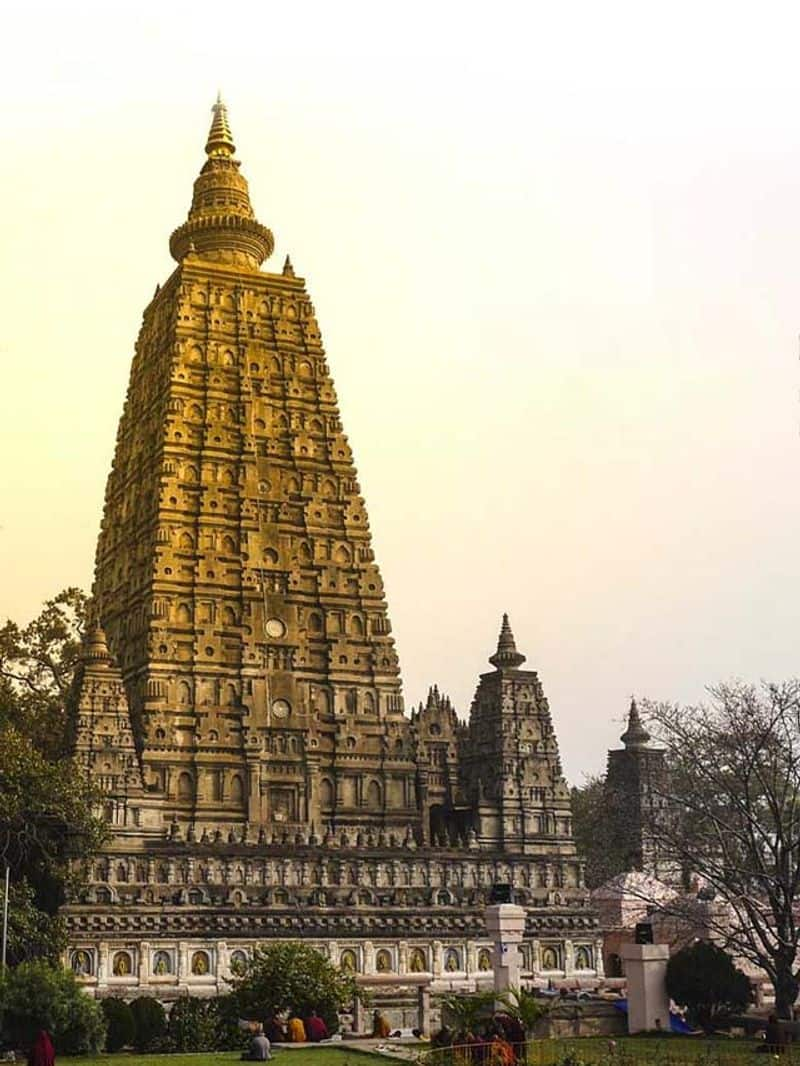
Best Time to visit Mahabodhi Temple: October to March
How to reach?
- By Air: Gaya International Airport is the nearest airport, approximately 10 km from Bodh Gaya.
- By Train: The nearest railway station is Gaya Junction, approximately 13 km from Bodh Gaya.
- By Road: Bodh Gaya is approximately 129 km from Patna.
Kedarnath Temple, Uttarakhand
Situated at an altitude of 3,584 metres (approximately 11,759 ft) in the majestic Garhwal Himalayas at Gaurikund, the Kedarnath Temple is one of the 12 Jyotirlingas of Shiva and the most significant of the Panch Kedars. Constructed by Jagad Guru Adi Shankaracharya in the 8th century, this ancient marvel in Uttarakhand also has ties to the Mahabharata.
Believed to be over 1,000 years old, the temple is a remarkable feat of stone craftsmanship, constructed with interlocking stone slabs and without mortar. Its grey stone steps feature Pali inscriptions, while the walls are adorned with statues of Lord Krishna, the Pandavas, Draupadi, and other Hindu deities. A majestic statue of Nandi, Shiva's divine bull, stands at the entrance. Inside the inner sanctum, or garbha griha, resides the Sadashiva form of Shiva. Due to the harsh weather conditions, the temple is closed during the monsoon season and winter when landslides and snowfall are common.
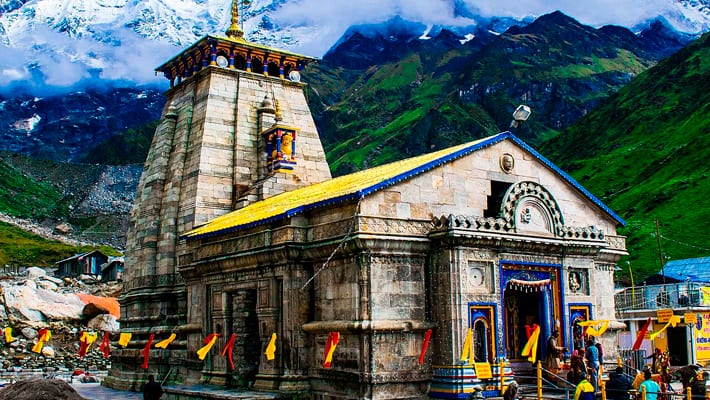
Best time to visit Kedarnath Temple: May to November (excluding monsoon months - July-August, sometimes September)
How to reach?
- By Air: Jolly Grant Airport in Dehradun is the nearest airport to Kedarnath, approximately 235 km away.
- By Train: The nearest railway station is in Rishikesh, approximately 243 km from Gaurikund.
- By Road: Gaurikund is 237 km from Haridwar.
Dilwara Jain Temples, Rajasthan
For architecture enthusiasts, the Dilwara Jain Temples in Mount Abu, Sirohi, are a must-visit. Built between the 11th and 13th centuries, these temples boast intricately detailed rock shrines that exemplify exceptional craftsmanship. Nestled in the Aravalli mountain range, they are visually stunning from the walls to the pillars. Designed by Vastupal Tejpal and constructed by Vimal Shah, the site holds significant religious importance for Jains and includes five temples: Vimal Vasahi, Luna Vasahi, Pithalhar, Parshvanath, and Mahavir Swami Temple.
Best time to visit: November to March
How to reach?
- By Air: Udaipur Airport is the nearest airport, approximately 176 km away.
- By Train: Abu Road Railway Station is the nearest, approximately 30 km away.
- By Road: Mount Abu is 494 kilometers from Jaipur.
Kandariya Mahadev Temple, Madhya Pradesh
According to the Madhya Pradesh Tourism website, the Khajuraho temples, rediscovered in the 1850s after centuries of neglect, were originally 85, but only 20 have survived the ravages of time. Among these, the Kandariya Mahadev Temple stands as a testament to India’s rich cultural heritage and artistic expression. Built between 1025 and 1050, this temple features intricate medieval designs and resembles a mountain. Dedicated to Shiva, along with Brahma and Vishnu, it was commissioned by King Dhangadeva of the Chandela dynasty. With their erotic and sensual depictions, the Khajuraho temples provide a unique insight into India’s cultural diversity.
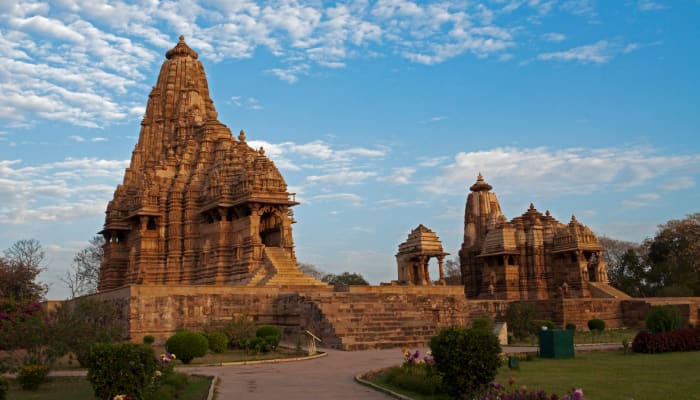
Best time to visit Kandariya Mahadev Temple: October to February
How to reach?
- By Air: Khajuraho Airport is the nearest airport, only 3 km away.
- By Train: Khajuraho Railway Station is the nearest, approximately 6 km away.
- By Road: Khajuraho is 305 km from Prayagraj.
Akshardham Temple, Delhi
The Swaminarayan Akshardham Temple in Delhi is the largest Hindu temple, as recognised by Guinness World Records. Inaugurated on November 6, 2005, the temple was built over five years with the help of 11,000 skilled artisans and numerous volunteers. It was brought to life through the vision of HDH Pramukh Swami Maharaj, the founder of Bochasanwasi Shri Akshar Purushottam Swaminarayan Sanstha (BAPS).
Measuring 108.5 metres (356 ft) in length, 96.3 metres (316 ft) in width, and 42.9 metres (141 ft) in height, this architectural masterpiece boasts impressive dimensions. The temple complex includes a musical fountain and a tranquil lotus garden. Visitors can explore three exhibition halls with captivating installations, educational film screenings, and an immersive boat ride, showcasing a true blend of art and spirituality.
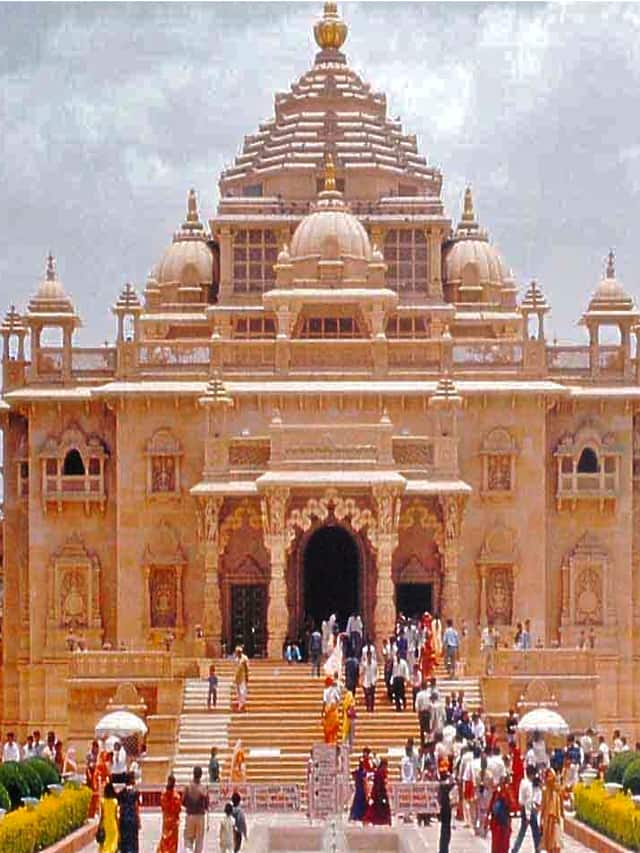
Best time to visit Akshardham Temple, Delhi: October to March
How to reach?
- By Air: Indira Gandhi International Airport in Delhi is approximately 21 km away.
- By Train: Approximately 10 kilometers from New Delhi Railway Station.
- By Road: The temple is approximately 14 kilometers from Central Delhi.
Golden Temple, Punjab
Crowned with a golden dome made of 400 kilograms of gold leaf, the Golden Temple, or Sri Harmandir Sahib, in Amritsar is one of Sikhism's holiest shrines. According to legend, Guru Ram Das, the third Sikh Guru, laid its foundation, and Guru Arjan Dev oversaw its completion. Baba Buddha Ji served as the first head priest, while Maharaja Ranjit Singh undertook the gold plating in the 19th century.
The community kitchen at this Sikh temple serves free meals, or langar, to about 20,000 people daily, and over 100,000 on special occasions. The Amrit Sarovar, the holy water tank surrounding the sanctum, is believed to have healing properties. The serene temple grounds offer a stunning reflection of the structure in the water, especially during Diwali and Guru Purab festivals.
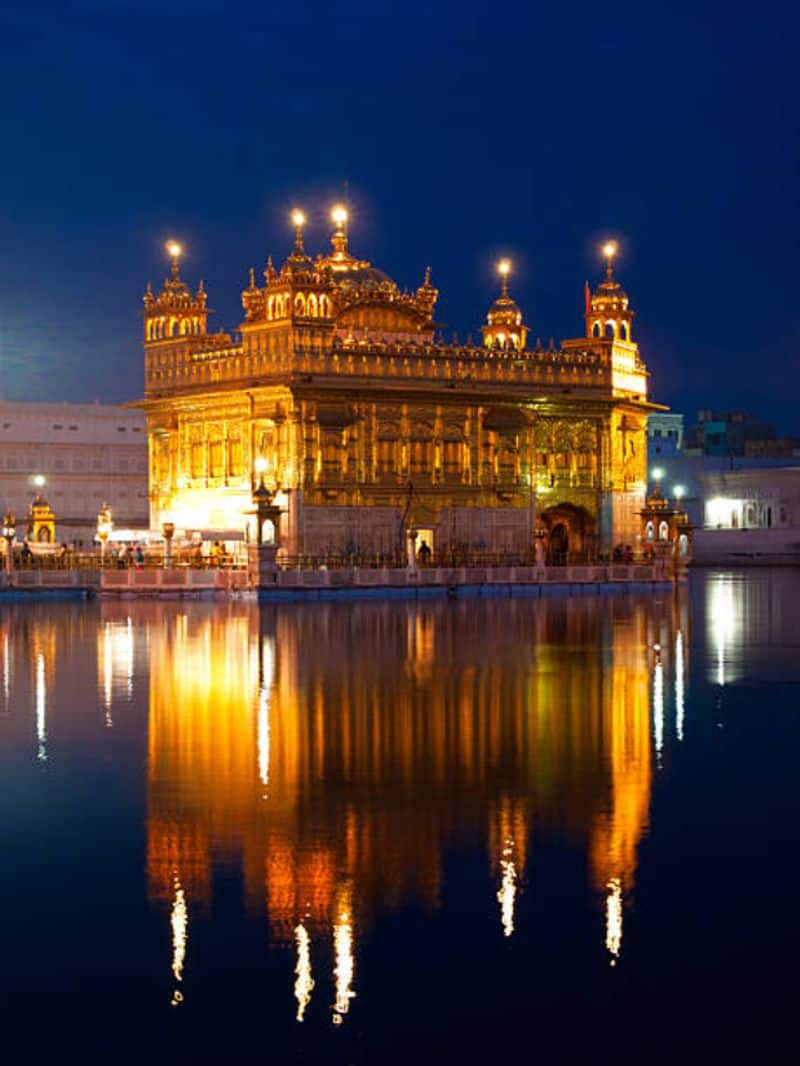
Best time to visit Golden Temple, Punjab: November to March
How to reach?
- By Air: Sri Guru Ram Das Jee International Airport in Amritsar is approximately 13 km from the Golden Temple.
- By Train: Amritsar Railway Station is two km from the Golden Temple.
- By Road: Amritsar is approximately 226 km from Chandigarh.
Last Updated Oct 22, 2024, 11:08 AM IST

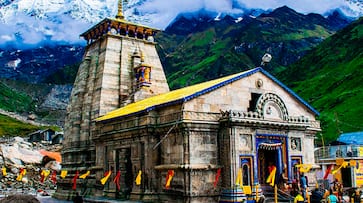







![Salman Khan sets stage on fire for Anant Ambani, Radhika Merchant pre-wedding festivities [WATCH] ATG](https://static-gi.asianetnews.com/images/01hr1hh8y86gvb4kbqgnyhc0w0/whatsapp-image-2024-03-03-at-12-24-37-pm_100x60xt.jpg)
![Pregnant Deepika Padukone dances with Ranveer Singh at Anant Ambani, Radhika Merchant pre-wedding bash [WATCH] ATG](https://static-gi.asianetnews.com/images/01hr1ffyd3nzqzgm6ba0k87vr8/whatsapp-image-2024-03-03-at-11-45-35-am_100x60xt.jpg)


